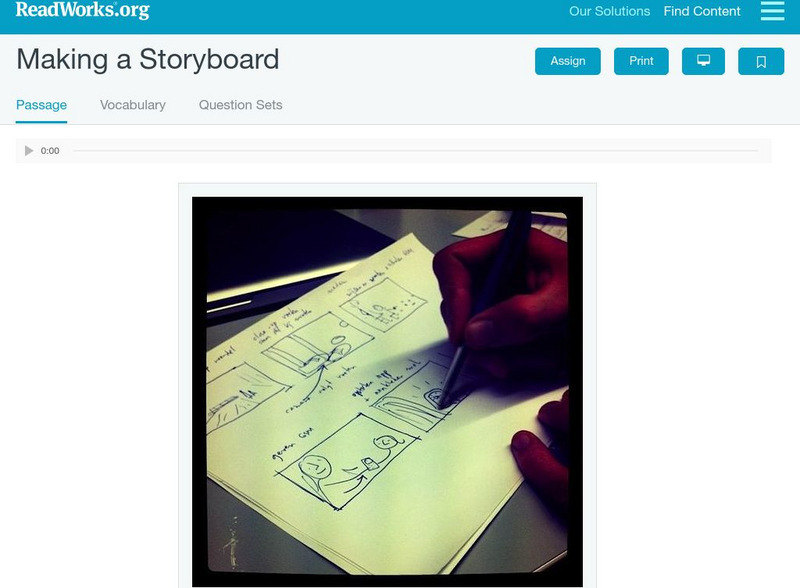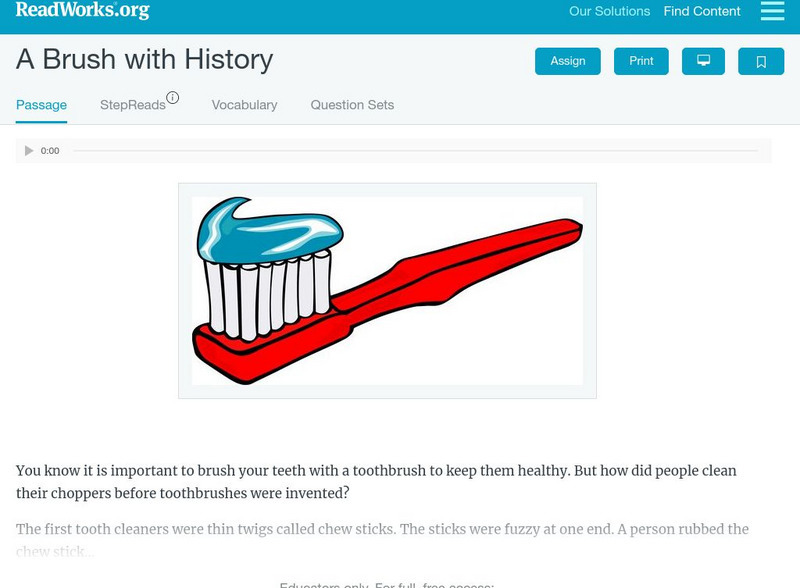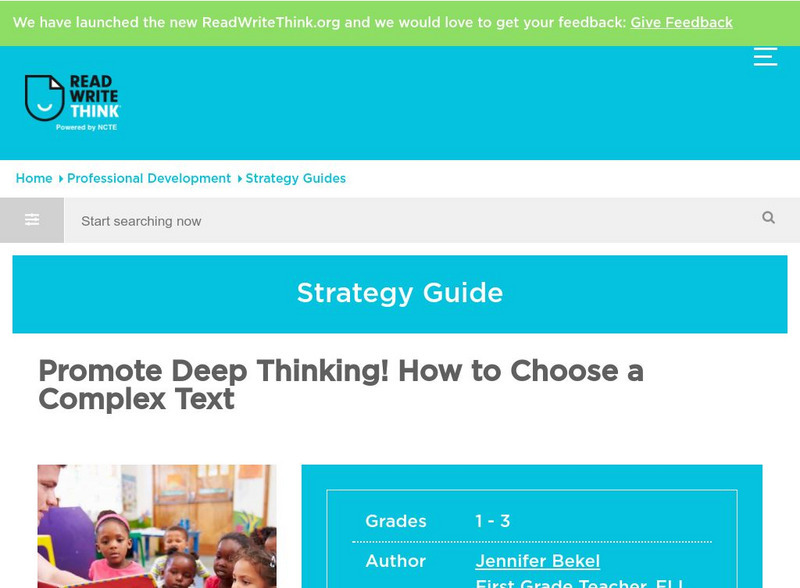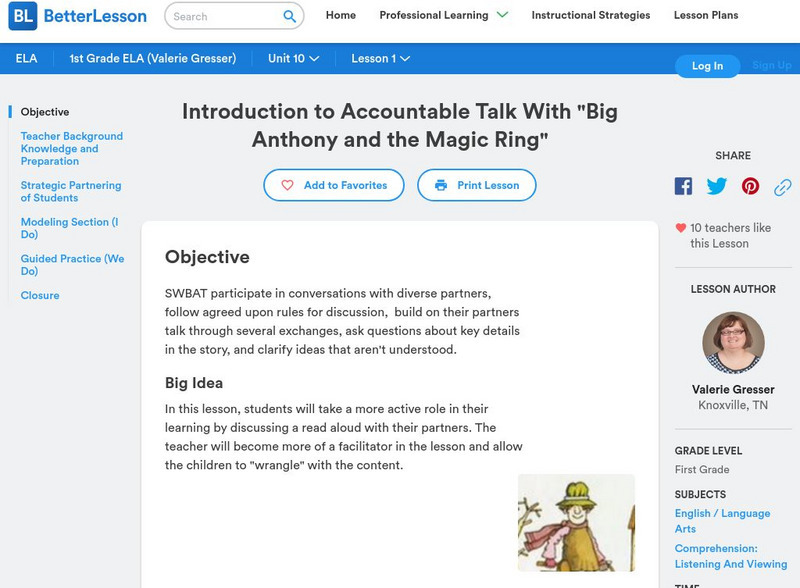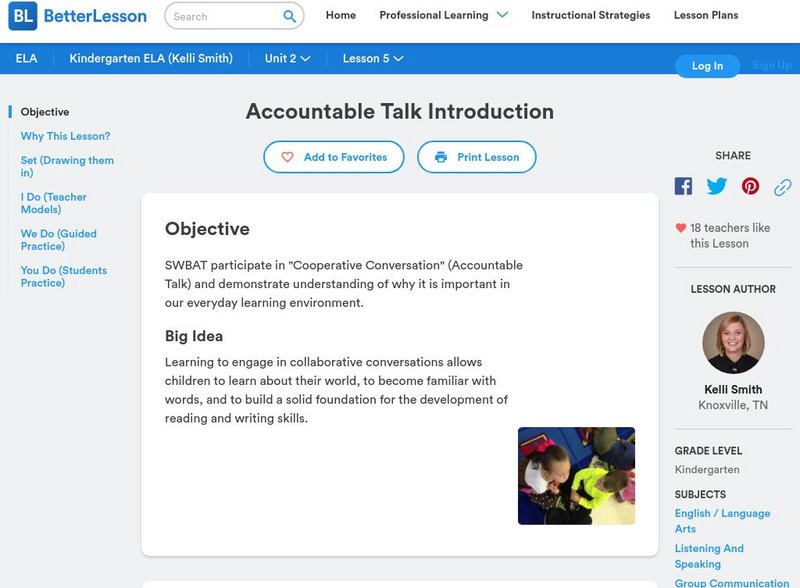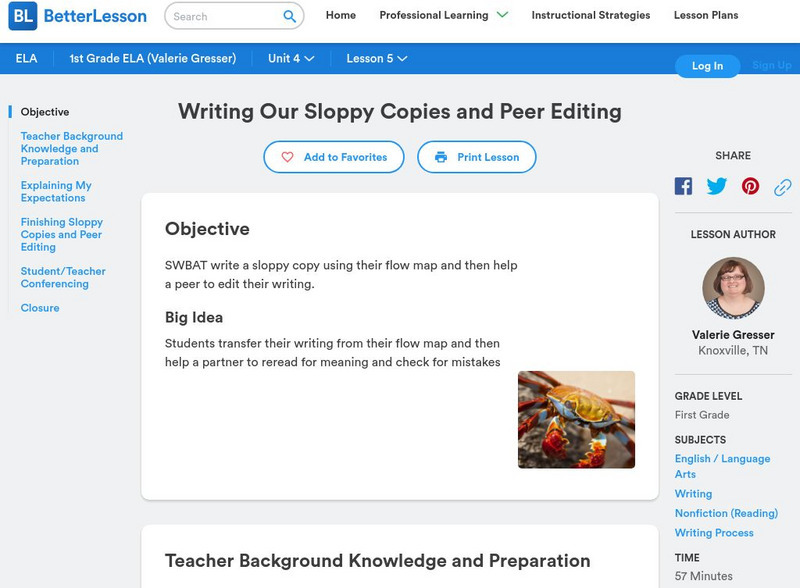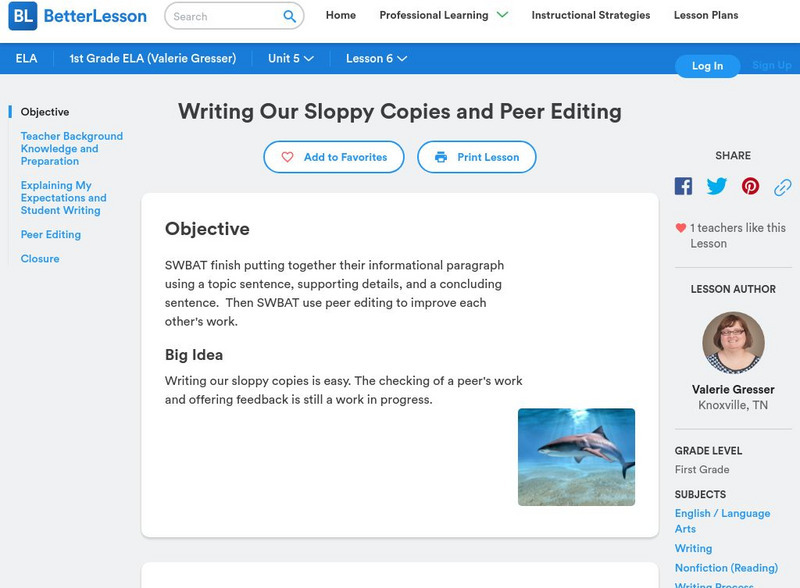Curated OER
Causes
What makes someone cry? Little learners read the story, Why Do You Cry?: Not a Sob Story by Kate Klise to discover a bit about crying and a bit about cause and effect. They'll fill out a cause and effect chart while they discuss and...
Curated OER
Sorting in More than One Way
Sorting, categorizing, and classifying are skills learners must master for many different reasons. The class will work in small groups to list, classify, and sort a stack of familiar books. The neat part about the lesson plan is that the...
Curated OER
Lesson 1: Figurative Language
The story Once in a Blue Moon by Nicola Morgan is full of figurative language. Second graders choose one idiom from the story and create an illustration of its meaning. Handouts and structured vocabulary practice is included with the...
Smithsonian Institution
Smithsonian in Your Classroom: Introduction to the Nature Journal [Pdf]
Smithsonian in the Classroom presents "Introduction to the Nature Journal." Teachers can download this comprehensive teaching package in which students will practice and develop their skills of writing observations and making hypotheses....
Read Works
Read Works: Passages: Making a Storyboard
[Free Registration/Login Required] Students read a nonfiction text about a girl whose aunt is a children's book author and answer questions about comprehension, sequencing, supporting details, main idea, vocabulary, and more. Links to a...
Read Works
Read Works: Passages: A Playground Problem
[Free Registration/Login Required] Students read a nonfiction text about building a model for a new playground and answer questions about comprehension, supporting details, main ideas, vocabulary, and more. Links to a paired text and...
Read Works
Read Works: Passages: Grade 2: A Brush With History
[Free Registration/Login Required] Students read a non-fiction article about the history of a toothbrush and answer questions in comprehension, sequencing, inferences, main idea, transitions, and more. A link to paired text questions is...
ReadWriteThink
Read Write Think: Promote Deep Thinking! How to Choose a Complex Text
This is a strategy guide to determine if reading material is complex and therefore, worth a close reading. It offers a list of quantitative, qualitative, reader characteristics/task consideration measures of text complexity.
Better Lesson
Better Lesson: Day 1 Rude Giants
Students will use illustrations and details in a story to describe its characters, setting, and events by working with partners to ask and answer questions about the text.
Better Lesson
Better Lesson: Introduction to Accountable Talk
For this lesson, students will take a more active role in their learning by discussing a read aloud with their partners. The teacher will become more of a facilitator in the lesson and allow the children to "wrangle" with the content.
Texas Education Agency
Texas Gateway: Asking and Answering Questions Professional Development
Asking and Answering Questions Professional Development provides strategies to teach students how to ask and answer questions more effectively to improve comprehension in the classroom and on standardized assessments. It containing 9...
Better Lesson
Better Lesson: I See the Weather
Students will answer text-dependent questions for the expository text "Seasons and Weather". While text-dependent questions have been around for a long time, Common Core asks teachers to focus on them during reading. This lesson plan...
Better Lesson
Better Lesson: Accountable Talk Introduction
Learning to engage in collaborative conversations allows children to learn about their world, to become familiar with words, and to build a solid foundation for the development of reading and writing skills. This lesson introduces rules...
Better Lesson
Better Lesson: Writing Our Sloppy Copies and Peer Editing
Students will write a sloppy copy and help a peer to edit their writing. They will use a kid-friendly checklist (included)to help each other find their mistakes. Videos of students engaged in the lesson are provided, along with a...
Better Lesson
Better Lesson: Writing Our Sloppy Copies and Peer Editing
Students will write a sloppy copy and help a peer to edit their writing. They will use a kid-friendly checklist (included)to help each other find their mistakes. Videos of the lesson in action are provided, along with a teacher's grading...
Better Lesson
Better Lesson: Writing an Opinion Based on Facts From a Text
Students will plan a paragraph that states their opinion and cites evidence to justify their opinion about an informational text. This lesson uses biographies since students can easily be able to write down factual information from the...
Better Lesson
Better Lesson: Getting to Know You Bags
It is very important to build a class community where all students feel valued and safe. This activity will do just that and you will address the Common Core speaking and listening standards. Students will get to know each by discussing...
Education.com
Education.com: Asking Questions and Finding Answers
[Free Registration/Login Required] Pretending to be someone else is so much fun! In this hilarious lesson, learners will get to take on the persona of a book character as they practice their question and answer skills. At the conclusion...
Better Lesson
Better Lesson: Listen to and Follow Directions: Day 2
One important aspect of the common core is to prepare students to be able to participate in conversations and contribute accurate and relevant information. In this lesson, students listening skills will evolve as they translate verbal...
CPALMS
Cpalms: Compare/contrast Life Cycle Texts
[Free Registration/Login Required] Students will learn to compare and contrast texts about life cycles using a Venn diagram. Then, using the Venn diagram, students will write an expository paragraph including an introductory sentence,...
Better Lesson
Better Lesson: The Power of Questions
Learners will have the opportunity to work collaboratively by using the Think-Pair-Share technique to ask questions about a story. Included are examples of student's questions, and a Think-Pair-Share poster and document.
Better Lesson
Better Lesson: Shared Inquiry Discussion
Students learn to generate ideas with a clear focus in response to questions while participating in a shared inquiry discussion. Included are shared inquiry guidelines, and tips on discussing fiction and non-fiction books using this method.
CPALMS
Cpalms: Giraffes and Zebras Oh My!
[Free Registration/Login Required] For this lesson plan, students will be able to ask and answer questions about key details in a text. Additionally, students will also be able to identify, compare, and contrast characteristics between...
Scholastic
Scholastic: Helping Young Children Express Themselves
We know that communication is central to the learning process. Communication can be specifically linked to the expanding skills of listening and speaking, as children connect to the reading and writing behaviors that characterize early...





![Smithsonian in Your Classroom: Introduction to the Nature Journal [Pdf] Unit Plan Smithsonian in Your Classroom: Introduction to the Nature Journal [Pdf] Unit Plan](https://d15y2dacu3jp90.cloudfront.net/images/attachment_defaults/resource/large/FPO-knovation.png)
